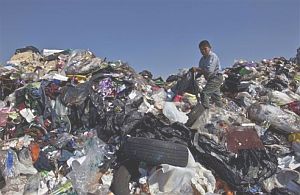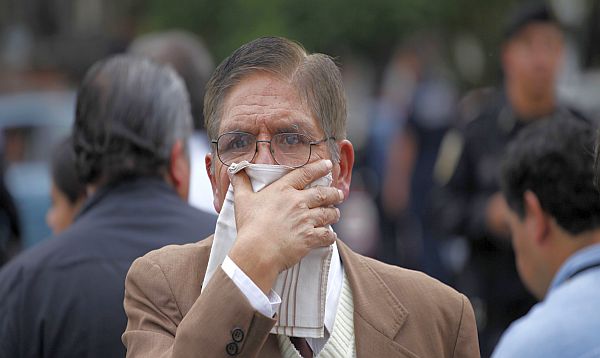Mexico City, Mexico - For many, the first experience of Mexico City is a sprawling airport and an appalling stink. It wafts from the manholes and leaves the morning air smelling fresh as a septic tank.
On bad days, it hits travelers as they step off airplanes and follows them through the terminal. It can overpower a pleasant bike ride along the cobblestone streets of the capital's downtown, or interrupt an alfresco meal in the trendy Condesa neighborhood.
Anna Sloan, a 68-year-old tourist from California who arrived at the Mexico City airport one recent afternoon, noticed a foul odor while waiting to pick up her luggage. "What's that smell? That's horrible!" she told a group of friends traveling with her. "That's no way to welcome visitors."
The odor problems are a result of poorly managed wastewater and trash in a sprawling metropolis whose population – 20 million by official count – outgrew its infrastructure decades ago. Authorities have sought for years to find a solution.
Now, it's new Mayor Miguel Mancera's turn to try to deodorize the city's BO. This month he announced plans to control the foul odors that waft from the city's only compost plant at a landfill near the airport and to more aggressively recycle trash citywide. The ambitious $135 million plan calls for construction of three bio-gas plants to produce electricity from compost. It will include more recycling programs so that by the time it's completed in 2018 all 12,500 tons of trash produced daily is recycled, Mancera said.
Experts agree the main source of the fetid air that blows into some areas of Mexico City intermittently is from an overwhelmed sewage system. The city's sewage pipes and an underground drainage tunnel, which has to accommodate sewage and storm water, were built more than 50 years ago, and the population in the metropolitan area has doubled since then and the system can't keep up.
 |
| Bordo Poniente landfill near the airport in Mexico City |
To make matters worse, the city pumps so much water from underground aquifers that some neighborhoods sink by up to a foot a year, which further disrupts the draining of sewage, said Sergio Palacios Mayorga, a professor at Mexico's National Autonomous University, who studies waste management.
"What's happening is that the sewage system has less pressure because the city is sinking, and that makes wastewater move slowly or completely get stuck in some places," he said.
Mexico City advocates note the odor problems come and go and do not affect all areas of the city equally. And for such a huge metropolis in a developing country where boiling grease from thousands of food stalls crackle along many streets, things could be worse. "There are smells in the city, definitely, but they are in certain areas where the sewage system doesn't work very well," said Ricardo Estrada, deputy director for recycling at the city's Development Services Department.
Sewage pumps have been built throughout the city and work constantly to suck sewage-laced water out of the rapidly sinking, mountain-ringed lakebed on which the city was built more than 600 years ago. The pumps have venting stacks that spew foul-smelling gas into the sky, including from a large yellow horse figure that doubles as a piece of public art.
The huge sculpture known as "El Caballito," or "The Little Horse," sits on the leafy, elegant Reforma Avenue and is a venting stack for the city's underground drainage tunnel.
The sewage system in the metropolitan area currently processes more than 13,000 gallons (50,000 liters) of sewage water every second, enough to fill an Olympic-size swimming pool every minute.
City officials are also looking for help with bad odors and, more importantly, the risk of major flooding from a 39-mile long and 7-meter wide sewage tunnel that is being built by the federal government. So far, 6 miles of the underground project, which will cost at least $15 billion, have been completed.
Mexico City residents have learned to live with the smells. Some joggers and bike riders wear surgical masks that protect them against pollution and rancid air. Restaurant owners, food vendors, shoe shiners, and anyone else who works on sidewalks cover manholes with pieces of tarp, carpet, or trash bags. Patrons at sidewalk cafes wrinkle their noses at the fetid fumes and simply change tables indoors.
Jose Garcia, a 48-year-old shoe shiner with a prime spot on Reforma Avenue, uses a plastic bag and a piece of carpet to try to conceal the smell emanating from a manhole near his work station, but his clients still notice. "They tell me they can smell feces," Garcia said. "I can smell it, too, from time to time, but what else can I do? There are other corners where the smell is worse."
Garcia said he has worked on the same corner for 33 years and the whole time he has caught whiffs of rancid air. "We are thousands and thousands of people with a bad drainage system. Imagine!" he said. "I have already gotten used to it."


